Clarissa Explains It All

Draw a straight line back from any of today’s lady-blogs, like Jezebel, The Gloss, or The Hairpin, and somewhere around 1994, you’ll crash right into Clarissa Marie Darling. Together with Blossom, The Baby-Sitters Club’s Claudia Kishi, and basically everyone who worked at or was featured in Sassy magazine, Clarissa personified what so many girls—myself included—at that time aspired to be: smart, funny, and wearing the hell out of some badass Doc Martens.
Too often, girl-centric entertainment is pink, frilly, and laced with woozy crushes on some unattainable, cool older boy. Tween girls are one of the most powerful buying groups (Who else buys Wet ’N’ Wild cosmetics and Lip Smackers?), but more often than not, shows designed to appeal to them end up being critically untenable schlock, filled with toy-driven characters like She-Ra, Bratz, or Strawberry Shortcake.
Smart live-action television shows for girls didn’t actually exist until the mid-’90s, when an ex-Saturday Night Live writer named Mitchell Kriegman managed to convince Nickelodeon to take a chance on an off-the-wall fictional gal from Ohio. Clarissa was strong. She could make her own computer games back when it wasn’t cool for girls to spend time with technology, let alone learning programming. She wore men’s work shirts instead of Esprit, and preferred Violent Femmes to Wilson Phillips. Simply by being an individual, she became an everygirl for viewers.
Though it only ran for 65 episodes over three years, Clarissa broke the world of girl-centric—and tween-centric (a term that didn’t even exist before the SNICK era)—television wide open. It was the first Nick series to feature a female lead, and its success led the network to churn out at least 10 more “girl power” live-action shows to date, including The Secret World Of Alex Mack, The Amanda Show, Zoey 101, and iCarly. The lesson from Clarissa was clear: Take the time to make smart television for girls, and they will come in droves to watch it.
Clarissa was about more than just girl crap, though. It was about teen angst and the eternal struggle to stand out from the crowd. Granted, those struggles manifested in crushes on the town weatherman, standing up to (and later dating) school bully Clifford Spleenhurfer, and trying to keep a hippie dad from rapping about architecture on career day. But heck, it seemed really real. And weirdly, it kind of still does today.
There’s an argument that all kids’ TV is total garbage, and a lot of it is. Hannah Montana isn’t a great show. Saved By The Bell didn’t empower kids to do much more than be cool. In the ’80s, a lot of Saturday-morning TV existed for the sheer purpose of selling toys to kids. It’s a racket, and it doesn’t have to be done well. Put in a laugh track, some fart jokes, and kids running circles around befuddled adults, and your show is almost a guaranteed success.
Clarissa rose above that, though it did occasionally embrace the standard tropes. This dry comedy was, after all, about the trials and tribulations of growing up as a teen girl within the wacky constructs of the offbeat Darling family. Dad Marshall was an architect, Mom Janet a tofu-obsessed children’s-museum director, and young Ferguson a Reaganite redhead from planet little brother. Clarissa’s best friend Sam had a mostly absent sportswriter dad who let him eat pizza every day, much to Clarissa’s chagrin. Other characters came and went, including the occasional female friend for Clarissa, but this core crew held down the fort, for the most part.
In the first season of the show alone, viewers got a strong sense of Clarissa as a person as well as a protagonist. In the pilot, for example, Clarissa is hellbent on killing her brother Ferguson after he brings her training bra to school show-and-tell. She manages to wrangle him into a straightjacket and attempts to hook him up to a bevy of helium balloons, ultimately injuring Sam instead, but in a way that gets him out of his dreaded football tryouts and getting pulverized by Wally Butterman. It’s worth noting here that viewers actually saw Clarissa’s bra here for several seconds, something pretty edgy for a children’s network, not to mention the whole “actually trying to kill her brother” thing. Moreover, viewers learned that this wasn’t a kids’ show—or a girls’ show—they’d seen before. Clarissa talked fast, broke the fourth wall, and snuck around behind her parents’ backs. She didn’t care about boys or clothes, and she owned an alligator. She was cool without being Zack Morris or Kelly Kapowski, and that was admirable.
In “School Picture,” which aired later in the first season, Clarissa fights the powers that be, both in her family and at her school, by asking to choose her own clothes for the dreaded school-picture day. Janet wants a navy cardigan and knee socks, but Clarissa wants an orange b-boy jacket, overalls, and an India-themed baseball cap with a jeweled elephant on it. After Clarissa discovers her dad’s high-school photo was redacted from his yearbook because his hair was too long, she wins her mom over, only to discover that her quest for individuality has spilled over to her classmates, resulting in a group shot of a bunch of kids wearing sideways baseball caps and neon. The lesson? Even successful grassroots activism doesn’t always benefit the activist.


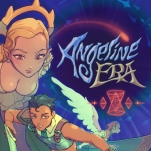
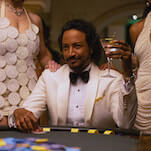
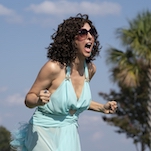
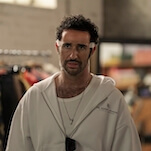
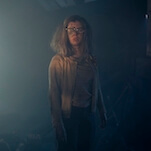
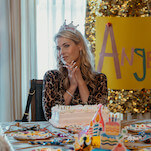
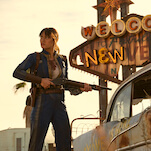
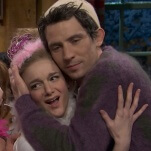
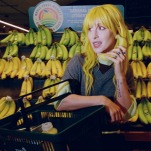








![HBO teases new Euphoria, Larry David, and much more in 2026 sizzle reel [Updated]](https://img.pastemagazine.com/wp-content/avuploads/2025/12/12100344/MixCollage-12-Dec-2025-09-56-AM-9137.jpg)




















